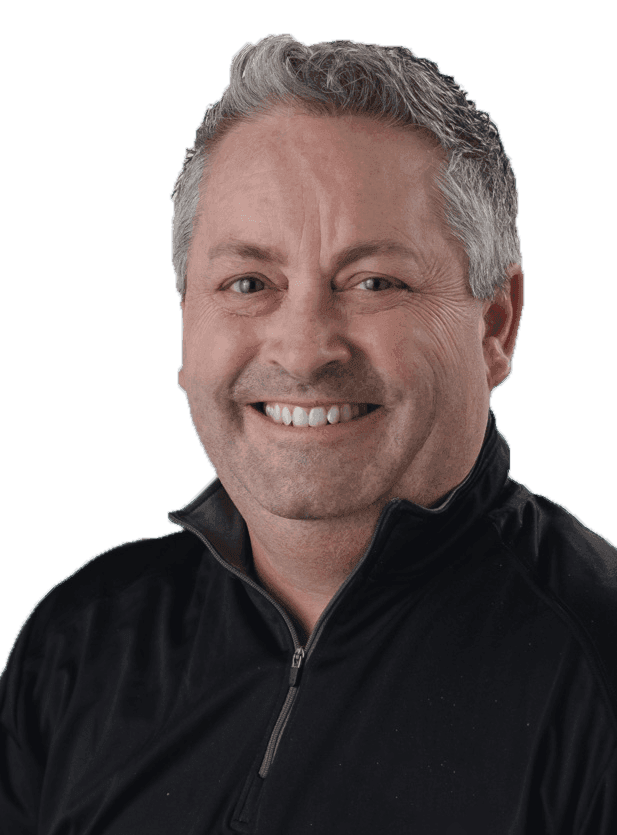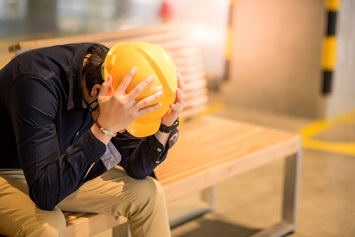As the COVID-19 pandemic wears on, EHS professionals need to remain aware of the collective strain workers in their organization might be feeling, as long-term mental health challenges could create the potential for workplace violence. As it’s important for environment, health, and safety professionals to be prepared for any such threats to their businesses, and we spoke with Jean-Paul (JP) Guilbault, the CEO of Navigate360 about how you can create safe environments for your employees to thrive in during this challenging time.
Prefer to listen to the episode? You can find it here.
Justin Scace: Hello everyone, and welcome to EHS on Tap. I’m your host, Justin Scace, senior editor of the EHS Daily Advisor. We hope that all of our listeners are doing all they can to remain healthy and safe during the ongoing COVID-19 pandemic. Among the many health and safety concerns related to COVID-19 is the challenge posed to all of our collective mental health.
Our current situation has put a strain on all of us to some extent, and with mental health challenges come a concern about potential workplace violence. It’s important for environment health and safety professionals to be prepared for any such threats to their businesses. We have an expert with us today to help us understand these considerations, and provide advice on how to stay ready to protect the workforce.
Joining us today on the podcast is JP Guilbault, the CEO of Navigate360, a company that boldly confronts the challenges communities face by creating safe environments where they can thrive and focus on their true mission. Prior to joining Navigate360, JP served as the president and CEO of Community Brands. He is a techie at heart with more than 20 years of experience leading fast paced technology companies.
JP, welcome, and thank you for joining us today on EHS on Tap.
JP Guilbault: Thank you for having me, Justin.
Justin Scace: To start off, could you tell us a little bit about yourself? How did you first get involved in the EHS space, and what do you do in your current role as CEO of Navigate360 to promote safety?
JP Guilbault: I think I’ll start from the formative years. I grew up in the Midwest, pretty traditional Midwest values and family. My father was a serial entrepreneur, had tons of businesses that he ran and I often worked with him. In my college years I spent time working alongside my mother, who was a nurse in a trauma center outside of Detroit. I saw all types of life, life experiences, from tragedy to, in some ways, miracles that often came about.
I gained an appreciation for what challenges we had as a society and what issues we had, from mental health to crime and violence. I’ve always been interested in it. My degree was in psychology, and by some stretch or way of path, that I ended up in business, running and spending time in technology companies, often focused on the underserved markets. Really focused on small businesses, midsize businesses, as well as nonprofits that we’re trying to further and promote their communities and their causes. That’s why I’ve had a great, great success and a great path.
After 20-some odd years, you start thinking about what’s next. I was contemplating spending time teaching, helping entrepreneurs think about their businesses. But lo and behold, last November, I was approached about a unique opportunity around a safety company that was thinking about just an inspirational mission to save lives. That’s what’s at the core of their heart.
If I was going to come back and do something every day, I wanted to come back to something that was focused on societal and social good, or social based problems that needed an answer to them, and one where the brand cared about long lasting values. That’s how I ended up at Navigate360.
What we do is … we have the opportunity to think about a modern approach to safety, to wellness, to prevention. Businesses and schools and our communities wrestle with violence and suicide and mental health issues every day. What I want to do, and what I approach that with, is a unique way of thinking about the way technology, people, and process come together to address forming a culture of safety, and thinking about prevention to recovery.
Justin Scace: Excellent. Thank you for that. Now, we at the EHS Daily Advisor, we recently published an article that you authored about mental health strain related to COVID-19, and how it will likely lead to an increase in workplace violence. It was a very popular article, and it leads us to our conversation here today. To start us off, could you describe how our current situation is creating a mental health crisis within the workforce?
JP Guilbault: Sure. Let me start with two points. First of all, I hope I’m wrong about that. I think it’s up to all of us to really take that point of view and turn that around. But before I talk about the problems that people are facing and experiencing, I do want to stress and emphasize something that I brought out in that article, and that is most people are resilient.
In times of crisis people do do well and they do better than we expect. I think that’s important, that we all keep it in our purview. But we can’t ignore the facts that many adults and many children have experienced a lot of stress. Many families are under stress. They are losing loved ones and other family members to the health issues that are in front of us. You’re seeing the stories on the news about families that cannot grieve or support one another under normal conditions. We all know that death and illness have and require a grieving process. This pandemic has changed that grieving process by keeping distance.
Many families are under financial stress with many, many consequences. In fact, so many families that exist out there are also trapped within domestic conflict, marital abuse, child abuse, and they have no place to go and no one to intervene. Those stresses are real, real in mental health. The next layer of stress that’s about to come is going to be this return to kind of a new normal, and a new approach. What we’re going to be dealing with in our places of business is, really, the reality of all those stresses that I just mentioned.
But then our workforces are going to be dealing with new health rules that people may find it difficult to comply with. As a society, we don’t have a one-size-fits-all set of norms. Workplaces all have their own different norms, so do schools, so do families. We’ll see inside our workplaces different behaviors, different conflicts as a result of some of the new policies in physical distancing that are coming about. These types of things are going to put pressure on workplaces.
We’re also dealing with the reality that some of the things we’re seeing today about racial injustice and the call for the disbanding of police, has it entered a whole new dynamic into what people are trying to process? Soon, on top of that, there is going to be an election, which brings its own division and debate.
I really empathize with all of us that are trying to think about mental health, and how to maintain employee productivity and engagement because we’re going to be in a unique time of many societal stressors that are going to create issues in our workplaces and for people.
Justin Scace: Yeah, absolutely. One thing that I wanted to mention was workplace violence. It can take many forms. We’re not just talking about assault between coworkers and/or customers, the sort of stereotypical view of workplace violence. We’re also talking about things like verbal abuse or bullying or even suicide. What forms of workplace violence are you most concerned about specifically relating to COVID-19?
JP Guilbault: Yeah, I think these are going to be … The things I worry about, you mentioned one. I definitely worry about suicide. Suicide is an issue in the country where, by some numbers, we’re at a rate of 15 suicides per 100,000 people. That’s projected to increase to 17 per 100,000 people, and that’s almost up 8% over 2018, so I definitely worry about that.
You know that self-isolation is a factor, but I think the other piece, when you start to look at and understand violence in the workplace, it is often driven or triggered by a grievance, whether it’s a grievance with the company and the company’s policy or a grievance with another employee.
I worry that what we’re seeing in society right now, people picking sides. There’s a lot of division. There’s a lot of opinion about masks and no mask. There’s going to be opinions about returned to work and how to do that. I do think we will see more verbal harassment and issues between employees as we deal with COVID, as we deal with a highly sensitive political and racial topics in our society at this period.
I think those are top of mind that we have to be alert to, and really understand and have some practices in the workplace on how to mitigate those issues, deescalate those issues, and promote good health.
Justin Scace: One of the big questions that all EHS pros have surrounding workplace violence is what are some of the biggest red flags for potential violence that safety professionals need to be on the lookout for in the coming months?
JP Guilbault: Some of these are going to sound obvious. They’ll sound obvious. They are the things we say every day. If it’s not just about our kids, it applies to the workplace. But if there’s any time ever that we need to have a mindset of see something, say something, it is right now. I think the things to be alert for are people making threats, either verbal or physical, watching for outbursts, screaming, yelling, mood changes.
It’s important to watch for the development of prolonged grudges that people are holding and forming, and not showing or demonstrating an ability to move on from. That also starts to form into or be attached to a prevalence to blame others for what goes wrong. Those would be some of the things that will be the obvious, and also not so obvious, to watch for. It’s important that we are acutely aware to these types of changes.
Justin Scace: Definitely. It’s clearly important to plan for prevention. How should EHS pros plan and train for addressing workplace violence? What are some of the challenges that they might face in creating such a plan, and how can they overcome these challenges?
JP Guilbault: Yeah, I think it’s important to recognize time is always a barrier to creating emergency planning policy, as is the knowhow. Certainly, our EHS experts tend to have the knowhow, but those that are often relied upon to also shape it, form it and teach it, this is a new concept. There are many, many businesses out there without the benefit of an EHS professional as well. We have to recognize that there are experts; you can turn to those experts.
Then the other thing that I think is important to be aware of when you think about planning for and creating emergency response and emergency preparedness plans is don’t be overconfident or hold a skeptical view. I think often, when you talk about people that have been involved in these incidents or reflect back, they often say, “I didn’t think it could happen to us” or “I didn’t think it would happen here.”
As far as what can organizations be doing, one is, I think developing plans in a way that puts them online and at the closest fingertip device level of people that are going to need to know, and know how to respond. We have to make it easy for people in an emergency to respond and manage and follow through and communicate on their plans. We have to take advantage of that.
The other thing, I think is, is time is … Turn to the best practices. There are plans that live out there, best practices that live out there within the government database, or the OSHA databases of what some of the most effective plans are and what they look like and, and use them. I always say a good plan is better than no plan.
Then they need to create the space for training. I think training is not just trained once, but it’s repetitive based, and it’s even rehearsal based. So, creating a way to deliver training in a digital format, in a way that can practice or develop a scenario response so that people know and know how to follow through, and then communicate. Communicate about what worked and what didn’t work, so that people are getting better after each time you do practice.
Justin Scace: Absolutely. That’s great. Talking about communication and working as a team, so to prevent workplace violence, who are some of the other folks, both internal and external to the organization, that a safety pro needs to effectively collaborate with in order to prevent violence in the workplace?
JP Guilbault: Yeah, I think number one, when you think about your workplace, not only are you designing a plan to prevent violence, but you’re creating a plan to survive and limit risk. I think making sure that EHS and HR staff and building and facility security staff turn to professionals to get a full view of the physical and cultural risk assessment that is inherent in their building.
Whether it’s by design, of locations of desks, or doors and access points, it’s going to be more important than ever that people understand their physical environment and how it contributes to safety and saving lives. I think turning to professionals that can help do that, and do that assessment well, so that EHS professionals and organizations can take action upon it is critical.
I also think, within the context of mental health and what we’re dealing with in COVID, again, our businesses are our community. Our businesses are located where we live and where our children go to school. I think turning to community leaders to form good communication protocols that one, share information between the community center or crisis response center, or in the workplace, or the school and the workplace.
It’s going to be important that we have a better way of sharing and understanding things about behavioral changes or issues that are occurring outside of the workplace, because we know that it’s likely to come back in. So I think community leaders, number two, is an important place to turn, and make sure that we’re building community safety plans, not just workplace safety plans.
Then I think number three is law enforcement. You always want to be planning with law enforcement for the worst and for the response scenarios. This ties back to understanding points of entry, understanding points of tactics that law enforcement might need access to or respond to in a building. You want to work with law enforcement officials on response plans.
I’ll leave you with just one more thought. I think employee culture experts are people to think about too, because I think getting advice, the best form to prevention is really identification of where someone is heading towards despair, where societal stressors are taking an impact. If you can get in front of that, that is the way you get to prevention.
Justin Scace: Absolutely. That’s great. Thank you. Now, before we sign off, are there any other thoughts or tips you’d like to share with our audience on this important topic?
JP Guilbault: Yeah. I’ll just close with what I just said and what I started with. One is that people are incredibly resilient, but at the same time, nearly one in seven people feel unsafe at work. If we feel unsafe at work, we’re not reaching our full potential as employees. We’re not reaching our full potential as a business. We know that if you’re not feeling safe at work and secure at work, you’re probably insecure at home, and therefore, we’re not feeling safe as a community.
I think as a business, as a CEO, we all have a duty of care for health and wellbeing of every employee. We need to act in a way that demonstrates our values to human life. That includes the training, the educating, and the supporting of mental wellness and safety; all things that sometimes we can’t tangibly tie to employee productivity or to skill advancement. But we have to have and know that we have a moral obligation to the duty of care and wellbeing of employees.
Justin Scace: Absolutely. That’s some wonderful advice for our audience of EHS professionals. I just want to say thank you very much again, JP for joining us today on EHS on Tap.
JP Guilbault: You’re welcome, Justin. Thank you for having me.
Justin Scace: Oh, you’re very welcome. To our listeners, please stay healthy. Be sure to keep an eye out for new episodes of EHS on Tap and keep reading the EHS Daily Advisor to stay on top of your safety and environmental compliance obligations. Get the latest in best practices, and keep your finger on the pulse of all things related to the EHS industry. Until next time, this is Justin Scace for EHS on Tap.
 Jean-Paul (JP) Guilbault is the CEO of Navigate360. Navigate360 boldly confronts the challenges communities face by creating safe environments where they can thrive and focus on their true mission. Through technology, education, and services, Navigate360 offers solutions spanning the full spectrum of safety, from prevention and preparation to response and recovery. Navigate360 is defining a modern approach to safety using rapid innovation and unparalleled expertise to provide the solutions necessary to build safer tomorrows. Jean-Paul (JP) Guilbault is the CEO of Navigate360. Navigate360 boldly confronts the challenges communities face by creating safe environments where they can thrive and focus on their true mission. Through technology, education, and services, Navigate360 offers solutions spanning the full spectrum of safety, from prevention and preparation to response and recovery. Navigate360 is defining a modern approach to safety using rapid innovation and unparalleled expertise to provide the solutions necessary to build safer tomorrows.
Prior to joining Navigate360, JP served as the President/CEO of Community Brands. A techy at heart, JP has more than 20 years leading fast-paced technology companies. JP and the teams he leads share an enthusiasm for developing technologies to help associations, nonprofits, K-12 private schools and faith-based organizations break through the siloed systems and disparate information that hold them back in the ever-changing business landscape. |
EHS on Tap is an environmental, health, and safety podcast by BLR’s EHS Daily Advisor. On each episode of EHS on Tap, our host will discuss emerging legal, regulatory, and policy issues with industry experts and the impacts to everyday safety and environmental professionals. EHS on Tap topics run the gamut of contemporary issues facing EHS managers and professionals today. Download the podcasts on iTunes here, and also be sure to visit our SoundCloud page for a full listing of all of our episodes!




